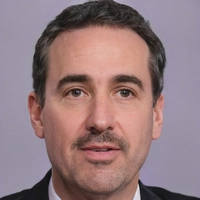America has long held the reputation of being one of the unhealthiest developed countries. This perception stems from a variety of factors that paint a complex picture of the nation's health landscape. Dive into an exploration of what makes the United States face these challenges and how medical tourism emerges as a solution.
Understanding the intricacies of America's health status requires a close look at lifestyle choices, accessibility to quality healthcare, and societal habits. Despite high expenditure on healthcare, the outcomes sometimes fall short of expectations, prompting citizens to consider medical tourism.
The concept of traveling abroad for medical treatment has gained traction, offering an array of benefits but not without its challenges. It's crucial to weigh these considerations carefully and discern how they influence America's quest for better health. Delve into innovative ways to shift the narrative and enhance the nation's wellbeing.
- Understanding America's Health Status
- Factors Contributing to Unhealthiness
- Role of Medical Tourism
- Improving Health in America
Understanding America's Health Status
The health status of America is a topic that generates much discussion and analysis. Despite the nation’s vast resources and advancements in medical technology, it still faces significant challenges in achieving optimal health for its citizens. One of the most striking observations is that, despite spending more on healthcare per capita than any other country, the United States often ranks lower than its developed-world counterparts in various health metrics. Chronic diseases such as heart disease, obesity, and diabetes have become more common, partly due to lifestyle choices that include poor diet and low physical activity levels. These conditions not only affect quality of life but also impose a substantial burden on the healthcare system.
Poor Lifestyle Choices
An examination of lifestyle choices provides insight into some of these challenges. The introduction of convenience foods and a culture that often favors sedentary activities has led to rising obesity rates. The fast-paced American lifestyle, characterized by long work hours and busy schedules, often contributes to unhealthy eating practices. People tend to opt for fast food, high in sugars and calories, rather than home-cooked meals. As a result, obesity rates have surged; data from the National Health and Nutrition Examination Survey indicates that more than 42% of American adults are classified as obese. America health issues are encapsulated in such troubling statistics, reflecting a pressing need for cultural shifts in dietary habits.
A report from the Centers for Disease Control and Prevention states, "Obesity is now a full-blown pandemic, as it's a condition that affects more than four in ten adults in the United States."
Healthcare System Challenges
Beyond lifestyle, the healthcare system itself poses unique challenges. While the United States is home to some of the world’s top hospitals and research institutions, the accessibility and affordability of care remain problematic. The current system often leaves a gap where many individuals fall through, unable to afford essential care or obtain insurance coverage. As a consequence, preventive care is frequently overlooked, leading to advanced stages of disease by the time patients seek medical attention. This exacerbates the nation's healthcare cost crisis, as treating advanced conditions is much more expensive than preventive measures. Compound this with varying quality of care across different regions and demographics, America can be seen struggling to ensure equitable health outcomes for all its citizens.
Social Determinants
Finally, social determinants of health, including income, education, and location, also play a crucial role in shaping the health of the nation. There are disparities in health outcomes between socio-economic groups, with lower-income populations often experiencing higher rates of disease and reduced access to healthcare services. Educational attainment strongly correlates with health literacy, influencing individuals' ability to make informed health decisions. Furthermore, geographic differences ensure that rural areas, for instance, face specific challenges such as fewer healthcare facilities and providers, which limit access to necessary medical care. These factors combine to paint a picture of a country in need of comprehensive strategies to tackle its health challenges.

Factors Contributing to Unhealthiness
When it comes to understanding the health challenges faced by America, it's essential to consider the multifaceted factors that contribute to its status as one of the world's unhealthiest developed nations. The primary factor often highlighted is the lifestyle choices prevalent in American society. Fast food culture, characterized by calorie-dense and nutrient-poor diets, plays a significant role. The convenience of processed foods, often preferred due to busy lifestyles, has led to widespread obesity. According to the Centers for Disease Control and Prevention (CDC), over 42% of American adults were classified as obese in 2020, a number that continues to rise.
Moreover, the intensity and pace of modern life contribute to stress and mental health challenges. High-pressure environments in both work and social settings often lead to neglected self-care and potentially unhealthy coping mechanisms like smoking or excessive alcohol consumption. A need for instant gratification may also fuel these negative habits. Coupled with a lack of adequate physical activity—something becoming less common with the advent of sedentary jobs and entertainment options—these factors significantly weaken health outcomes. Exercise is a crucial counterbalance to poor dietary habits, yet the American lifestyle often prioritizes convenience over wellness.
The healthcare system itself, despite its advancements and technologies, presents challenges. Many Americans face barriers to accessing healthcare services due to high costs and insurance complexities. A Commonwealth Fund survey found that 30% of adults in the U.S. have skipped needed medical care due to financial constraints, underscoring the disconnect between healthcare availability and affordability. This can lead to untreated conditions, which exacerbate over time.
Harvard Medical School's Dr. John P. Shovan has stated, "In a system where the highest technology is available, access remains a significant factor. The gap between innovation and everyday use presents a unique hurdle for American health."
Addressing these issues requires acknowledging the impact of socio-economic disparities. Income inequality has a stark effect on health, as those in lower-income brackets often face limitations in nutritious food options, safe exercise environments, and stable healthcare access. Urban planning and public policy play pivotal roles in shaping a healthier society. The disparity in educational resources also means that knowledge about wellness and preventive measures is unevenly distributed, leading to discrepancies in health outcomes across different communities.
Lastly, the cultural attitude toward health and wellness deserves scrutiny. Preventive care is often undervalued, with many opting to address medical issues reactively rather than proactively. Encouraging routine check-ups, vaccinations, and healthy lifestyle changes through community programs can bridge some gaps. Still, these require concerted efforts from both governmental and non-profit sectors to change the cultural mindset. Understanding these factors more deeply helps illustrate the broader picture of America's health challenges and sheds light on potential paths for improvement.

Role of Medical Tourism
The concept of medical tourism has dramatically transformed the healthcare landscape not only in America but globally. This practice involves traveling to other countries to obtain medical care and has become increasingly appealing due to the escalating costs and variable quality of health services in the United States. Many Americans find that they can receive the same or even superior medical treatments abroad at a fraction of the cost. Consequently, countries like India, Thailand, and Mexico have become popular destinations for treatments ranging from dental procedures to complex surgeries.
One of the reasons medical tourism is so attractive is because of the waiting times in the U.S. healthcare system. Many patients face long delays for surgeries and other procedures. By traveling abroad, they can often bypass these wait times and receive the treatment they need much sooner, allowing them to return to their daily lives more quickly. It’s worth mentioning that medical facilities in places like Singapore and Turkey have earned international accreditation, ensuring that patients receive high-quality care. The incentive for these countries is not only economic gain but also the opportunity to build a reputation for healthcare excellence.
Another element contributing to the rise of medical tourism is the advent of more specialized treatments. For chronic conditions or rare diseases, certain international destinations have developed expertise and innovative procedures that aren't widely available elsewhere. So, patients are not just looking for cost savings; they're also seeking the best possible outcomes for their health concerns. It’s this unique combination of cost-efficiency, reduced waiting times, and high-quality care that propels individuals to pursue healthcare beyond their own borders.
"Medical tourism offers a crucial bridge between healthcare disparities, making vital treatments accessible to those who might otherwise have been unable to afford them," remarked Dr. Gregory Allen, a healthcare economist, in an overview of the global health trends.
Yet, there are challenges and risks associated with medical tourism. Patients must consider potential legal and ethical issues, along with the continuity of care when they return to the U.S. Establishing a seamless transfer of medical records between healthcare providers can be complex and can affect post-treatment recovery and follow-up care. Despite these hurdles, the global trend towards medical tourism continues to grow, fed by the increase in international partnerships amongst healthcare providers. This ensures not only the immediate success of procedures but also contributes to longer-term patient health outcomes.
A healthcare paradigm shift is clearly evident as more Americans opt for medical tourism. This trend underscores the need for the U.S. healthcare system to adapt, innovate, and rebalance their cost and care structures. As the medical tourism industry evolves, it holds profound potential to reshape national and global healthcare policies, encouraging nations to invest in healthcare infrastructure and patient satisfaction initiatives.

Improving Health in America
America's journey towards improved health is a multi-faceted endeavor, demanding attention on numerous fronts. Tackling this challenge begins with scrutinizing the healthcare system, encouraging healthier lifestyle choices, and increasing awareness about preventive care. It's intriguing to note that despite the United States spending nearly twice as much on healthcare per capita compared to other industrialized countries, health outcomes have not aligned with these investments. According to a report by the Commonwealth Fund, America ranks last overall among 11 high-income nations on measures such as healthcare outcomes, access, and efficiency. This discrepancy propels the call for a revamped approach to health policy and practice in America.
One essential step to improving health in America involves transforming the healthcare system into a more inclusive and efficient model. To achieve this, there is a need for policies that prioritize quality care over quantity. Embracing value-based care could ensure that healthcare providers are rewarded for keeping people healthy rather than the number of medical procedures done. Expanding Medicaid and Medicare services to cover more individuals also represents a potent strategy to lessen healthcare disparities, especially in underserved communities. Adopting digital health tech, like telemedicine, has shown promise by increasing healthcare access swiftly and efficiently, notably during the pandemic situation. Such innovations can bridge the gap between patients and healthcare facilities, especially in rural or remote areas, and improve America’s health outcomes significantly.
Encouraging healthier lifestyle choices plays a pivotal role in enhancing health in America. Educational campaigns on nutrition, exercise, and the importance of mental health can empower individuals to take control of their health. Incorporating fitness initiatives in workplaces and schools can foster a community-wide shift toward better health habits. According to the CDC, integrating physical activity into the daily routine can significantly reduce the risk of chronic diseases such as obesity, diabetes, and heart disease, which are prevalent in the US. Moreover, limiting processed foods and sugary drinks in daily diets can dramatically cut down on numerous preventable health issues. Raising awareness through community programs and campaigns about the benefits of nutritious diets and regular exercise can change perceptions and instigate motivation toward living healthier lives.
Preventive care is another cornerstone of improving health in America. Encouraging regular screenings, vaccinations, and check-ups can help detect potential health issues early and prevent diseases from advancing. Teaching the importance of regular health check-ups and preventive care in schools and workplaces can help cultivate a culture of health awareness. A public focus on immunization and early disease detection has the potential to save lives and reduce the burden on hospitals and clinics. Providing incentives for such care can motivate individuals to engage in proactive health management. According to a quote from the American Public Health Association, "For every dollar the U.S. spends on healthcare, less than two cents go toward prevention." Increasing this investment could dramatically enhance health outcomes and decrease the staggering healthcare costs associated with treating advanced illnesses.






